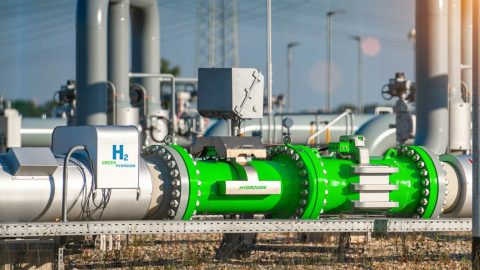Germany’s transforming its energy infrastructure through hydrogen technology. The country plans to complete 525 kilometers of hydrogen pipeline network by 2025. This strategic initiative will help Germany achieve its ambitious climate targets.

Current State of Germany’s Emissions Reduction
Recent data from Agora Energiewende reveals critical insights about Germany’s progress:
- Greenhouse gas emissions saw a 3% reduction in 2024
- The country reached a historic low of 656 million tonnes in emissions
- Compared to 1990 levels, emissions have dropped by 48%
- Germany moves closer to the EU’s 55% reduction target for 2030
Several sectors continue to face significant challenges:
- Transportation consistently fails to meet expected reduction goals
- Building efficiency programs show slower progress than anticipated
- Industrial sector emissions increased by 2% last year
- Many sectors still rely heavily on fossil fuels
- Current reduction rates need acceleration to meet future targets
Hydrogen Network Development: Key Infrastructure Plans
Germany has designed a comprehensive plan for its hydrogen pipeline network. The initial phase focuses on building 525 kilometers of infrastructure. This network will expand to 9,040 kilometers by 2032. Engineers will convert 507 kilometers of existing natural gas pipelines. The plan includes 18 kilometers of newly constructed pipeline infrastructure.
A major route will connect the Baltic Sea town of Lubmin. It extends to Bitterfeld-Wolfen in Saxony-Anhalt. This crucial segment spans approximately 400 kilometers of the network. The route will link key industrial zones across multiple regions.

Strategic Implementation of Hydrogen Technology
The new hydrogen infrastructure will serve multiple essential purposes. It provides power generation during periods of low renewable energy output. The network supports industrial facilities in their transition to cleaner energy. Heavy transport sectors can utilize hydrogen as an alternative fuel source. Steel manufacturers will reduce emissions through hydrogen-based production processes.
Chemical industries gain access to clean energy alternatives. The infrastructure enables efficient distribution across industrial centers. Local businesses can transition away from fossil fuel dependency. Regional economic growth will benefit from this new energy network.
Production and Distribution Plans
RWE leads significant developments in hydrogen production capacity. They will commission a 100-megawatt electrolyzer facility in 2025. The system integrates seamlessly with Germany’s existing renewable energy infrastructure. New connection points will serve major industrial centers nationwide.
Port facilities play a crucial role in the distribution network. They enable both domestic supply and international trade opportunities. The system ensures reliable energy distribution throughout the country. Strategic storage facilities will maintain consistent supply levels.
Impact on Germany’s Energy Transition
Germany achieved 59% renewable electricity generation in 2024. The hydrogen network builds upon this impressive milestone. It provides stability during fluctuations in renewable energy production. The system helps decarbonize traditionally difficult industrial sectors.
New clean technology industries emerge from this infrastructure development. Local economies benefit from increased investment in green technologies. The network strengthens Germany’s position in global energy markets. It creates numerous high-skilled job opportunities across various sectors.
Long-term Benefits and Outcomes

The hydrogen infrastructure delivers significant environmental improvements. Industrial carbon emissions will decrease substantially over time. National energy security improves through reduced foreign fuel dependence. Clean technology innovation drives economic growth in multiple sectors.
Germany strengthens its leadership position in sustainable energy solutions. The power grid gains stability through diversified energy sources. Local communities benefit from improved air quality. New business opportunities emerge in the clean energy sector.
Implementation Timeline and Milestones
The 2025 development schedule prioritizes essential network components. Initial pipeline segments will connect major industrial areas. The first electrolyzer facility begins operations that year. Key industrial zones gain access to hydrogen supply.
By 2032, the complete 9,040-kilometer network will be operational. Nationwide distribution capabilities reach full capacity. Industrial sector integration achieves comprehensive coverage. Regional hydrogen hubs develop around major connection points.
Conclusion
Germany’s hydrogen infrastructure represents a strategic approach to emissions reduction. The 2025 network completion establishes foundations for clean energy integration. This system supports both immediate needs and long-term climate objectives.
The infrastructure strengthens Germany’s position in renewable energy leadership. It provides solutions for challenging industrial decarbonization problems. The network creates opportunities for sustainable economic growth. Regional development benefits from clean energy infrastructure expansion.
Local communities gain advantages from improved environmental conditions. The system ensures reliable energy supply for future generations. Germany moves closer to its climate neutrality goals through this initiative. The hydrogen economy opens new pathways for technological innovation.
Did You Know? Illinois Secures $820M SAF Production Facility













